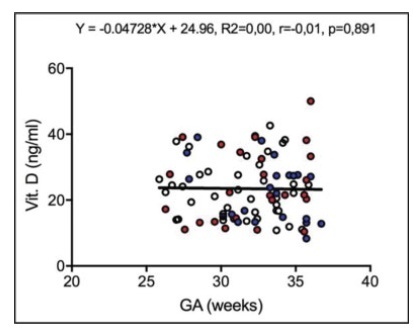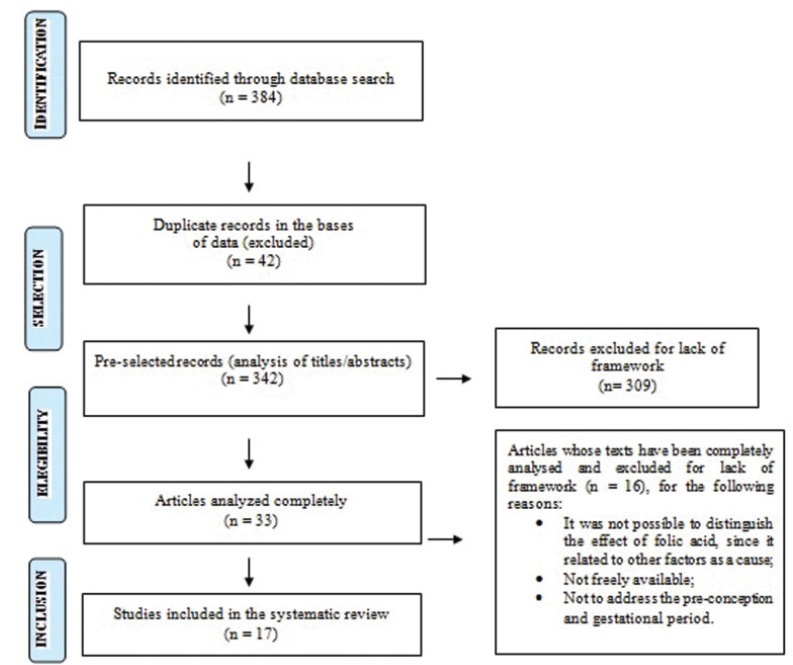Summary
Revista Brasileira de Ginecologia e Obstetrícia. 2021;43(10):725-727
Summary
Revista Brasileira de Ginecologia e Obstetrícia. 2021;43(10):728-735
The role of breast milk in the physical and mental health of infants and in the prevention of infant death is widely known. The benefits of breastfeeding for mothers and infants have been proven, but several factors can affect breastfeeding. Childbirth is one of the most influential factors. The present study aimed to investigate the effect of the type of delivery (natural childbirth and cesarean section) on breastfeeding based on the latch, audible swallowing, type of nipple, comfort, hold (LATCH) scoring system.
The present cross-sectional observational study was performed using the census method among women who referred to Afzalipour Hospital for delivery in May 2020; the breastfeeding pattern was completed by observation and the in-case information, by LATCH checklist. Data were analyzed using the Statistical Package for the Social Sciences (IBM SPSS Statistics for Windows, IBM Corp., Armonk, NY, United States) software, version 19.0, analysis of variance (ANOVA), and the Chi-squared statistical test.
Out of a total of 254 deliveries (127 natural childbirths and 127 cesarean deliveries), there was no statistically significant difference between the 2 study groups in terms of age, maternal employment status, and infant weight, but there was a statistically significant relationship between the type of delivery, the maternal level of schooling, and the appearance, pulse, grimace, activity, and respiration (Apgar) score in the first minute. The mean score of breastfeeding patterns among the natural childbirth group (9.33) was higher than that of the cesarean section group (7.21).
The type of delivery affects the mother’s performance during breastfeeding, and mothers submitted to cesarean sections need more support and help in breastfeeding.
Summary
Revista Brasileira de Ginecologia e Obstetrícia. 2021;43(10):736-742
Thyroid diseases are the second most common endocrine disorders in the reproductive period of women. They can be associated with intrauterine growth restriction (IUGR), preterm delivery, low Apgar score, low birthweight (LBW) or fetal death. The aim of the present study is to explore thyroid dysfunction and its relationship with some poor perinatal outcomes (Apgar Score, low birthweight, and preterm delivery).
Dried blood spot samples from 358 healthy pregnant women were analyzed for thyroid stimulating hormone (TSH), total thyroxine (TT4), and thyroglobulin (Tg). Neonatal data were collected upon delivery. Four groups were formed based on thyroid function tests (TFTs).
Of the 358 tested women, 218 (60.72%) were euthyroid. Isolated hypo thyroxinemia was present in 132 women (36.76%), subclinical hyperthyroidism in 7 women (1.94%), and overt hypothyroidism in 1 (0.28%). The perinatal outcomes IUGR (p = 0.028) and Apgar score 1 minute (p = 0.015) were significantly different between thyroid function test [TFT]-distinct groups. In the multiple regression analysis, TT4 showed a statistically significant inverse predictive impact on LBW (p < 0.0001), but a positive impact of Tg on LBW (p = 0.0351).
Thyroid hormones alone do not have a direct impact on neonatal outcomes, but the percentage of their participation in the total process cannot be neglected. Based on the regression analysis, we can conclude that TT4 and Tg can be used as predictors of neonatal outcome, expressed through birthweight and Apgar score. The present study aims to contribute to determine whether a test for thyroid status should become routine screening during pregnancy.
Summary
Revista Brasileira de Ginecologia e Obstetrícia. 2021;43(10):743-748
To assess maternal serum levels of vitamin D in fetuses appropriate for gestational age (AGA), small for gestational age (SGA), and with fetal growth restriction (FGR) according to estimated fetal weight (EFW).
This cross-sectional study included 87 pregnant women between 26 and 36 weeks of gestation: 38 in the AGA group, 24 in the SGA group, and 25 in the FGR group. Maternal serum vitamin D levels were assessed using the chemiluminescence method. The Fisher exact test was used to compare the results between the groups.
The mean ± standard deviation (SD) of maternal age (years) and body mass index (kg/m2) in the AGA, SGA, and FGR groups were 25.26 8.40 / 26.57 ± 4.37; 25.04 ± 8.44 / 26.09 ± 3.94; and 25.48 ± 7.52 / 26.24 ± 4.66, respectively (p > 0.05). The maternal serum vitamin D levels (mean ± SD) of the AGA, SGA, and FGR groups were 22.47 ± 8.35 ng/mL, 24.80 ± 10.76 ng/mL, and 23.61 ± 9.98 ng/mL, respectively, but without significant differences between the groups (p = 0.672).
Maternal serum vitamin D levels did not present significant differences among pregnant women with AGA, SGA, or FGR fetuses between 26 and 36 weeks of gestation according to EFW.

Summary
Revista Brasileira de Ginecologia e Obstetrícia. 2021;43(10):749-758
To investigate whether patients with a previous recombinant follicle stimulating hormone (rFSH)-stimulated cycle would have improved outcomes with rFSH + recombinant luteinizing hormone (rLH) stimulation in the following cycle.
For the present retrospective case-control study, 228 cycles performed in 114 patients undergoing intracytoplasmic sperm injection (ICSI) between 2015 and 2018 in an in vitro fertilization (IVF) center were evaluated. Controlled ovarian stimulation (COS) was achieved with rFSH (Gonal-f, Serono, Geneva, Switzerland) in the first ICSI cycle (rFSH group), and with rFSH and rLH (Pergoveris, Merck Serono S.p.A, Bari, Italy) in the second cycle (rFSH + rLH group). The ICSI outcomes were compared among the groups.
Higher estradiol levels, oocyte yield, day-3 high-quality embryos rate and implantation rate, and a lower miscarriage rate were observed in the rFSH + rLH group compared with the rFSH group. In patients < 35 years old, the implantation rate was higher in the rFSH + rLH group compared with the rFSH group. In patients ≥ 35 years old, higher estradiol levels, oocyte yield, day-3 high-quality embryos rate, and implantation rate were observed in the rFSH + rLH group. In patients with ≤ 4 retrieved oocytes, oocyte yield, mature oocytes rate, normal cleavage speed, implantation rate, and miscarriage rate were improved in the rFSH + rLH group. In patients with ≥ 5 retrieved oocytes, higher estradiol levels, oocyte yield, and implantation rate were observed in the rFSH + rLH group.
Ovarian stimulation with luteinizing hormone (LH) supplementation results in higher implantation rates, independent of maternal age and response to COS when compared with previous cycles stimulated with rFSH only. Improvements were also observed for ICSI outcomes and miscarriage after stratification by age and retrieved oocytes.
Summary
Revista Brasileira de Ginecologia e Obstetrícia. 2021;43(10):759-764
Breast surgery is considered a clean surgery; however, the rates of infection range between 3 and 15%. The objective of the present study was to intraoperatively investigate the presence of autochthonous microbiota in the breast.
Pieces of breast tissue collected from 49 patients who underwent elective breast surgery (reconstructive, diagnostic, or oncologic) were cultured. The pieces of breast tissue were approximately 1 cm in diameter and were removed from the retroareolar area, medial quadrant, and lateral quadrant. Each piece of tissue was incubated in brain heart infusion (BHI) broth for 7 days at 37°C, and in cases in which the medium became turbid due to microorganism growth, the samples were placed in Petri dishes for culturing and isolating strains and for identifying species using an automated counter.
Microorganism growth was observed in the samples of 10 of the 49 patients (20.4%) and in 11 of the 218 pieces of tissue (5%). The detected species were Staphylococcus lugdunensis, Staphylococcus hominis, Staphylococcus epidermidis, Sphingomonas paucimobilis, and Aeromonas salmonicida. No patient with positive samples had clinical infection postoperatively.
The presence of these bacteria in breast tissue in approximately 20% of the patients in this series suggests that breast surgery should be considered a potential source of contamination that may have implications for adverse reactions to breast implants and should be studied in the near future for their oncological implications in breast implant-associated large-cell lymphoma etiology.
Summary
Revista Brasileira de Ginecologia e Obstetrícia. 2021;43(10):765-774
To investigate depression and sexual function among pregnant and nonpregnant women throughout the COVID-19 pandemic.
A total of 188 women, 96 pregnant and 92 non-pregnant were included. The Beck Depression Inventory (BDI) and the Arizona Sexual Experience Scale (ASEX) were applied to the participants after obtaining sociodemographic data.
The depression scores of pregnant and non-pregnant women were similar (p = 0.846). We found that the depression scores were significantly higher among the group of participants who have lower economic status (p = 0.046). Moreover, the depression score was significantly higher among women who lost their income during the pandemic (p = 0.027). The score on the ASEX was significantly higher, and sexual dysfunction was more prevalent among women who have lower levels of schooling and income (p < 0.05). Likewise, the ASEX scores were significantly higher (p = 0.019) among the group who experienced greater income loss throughout the pandemic. Upon comparing the pregnant and non-pregnant groups, we detected that sexual dysfunction had a significantly higher rate among pregnant women (p < 0.001).
In times of global crisis, such as the current pandemic, low-income families have an increased risk of experiencing depression and sexual dysfunction. When we compared pregnant women with non-pregnant women, depression scores were similar, but pregnant women were at a 6.2 times higher risk of developing sexual dysfunction.
Summary
Revista Brasileira de Ginecologia e Obstetrícia. 2021;43(10):775-781
To analyze the scientific production regarding maternal folic acid (FA) supplementation and its relationship with autistic spectrum disorder (ASD).
We performed unrestricted electronic searches in the BIREME virtual bank, Virtual Health Library (VHL) and Medical Literature Analysis and Retrieval System Online (MEDLINE/PubMed) databases.
For sample selection, articles that met the proposed objectives were included, published in English, Spanish and Portuguese, the use of Health Sciences Descriptors (DeCS): autistic OR autism AND autism spectrum disorder AND folic acid, AND, with the use of the Medical Subject Headings (MeSH): autistic OR autism AND autistic spectrum disorder AND folic acid.
Data extraction was performed by the reviewers with a preestablished data collection formulary.
The Preferred Reporting Items for Systematic Review and Meta-Analysis Protocols (PRISMA-P) was used based on a checklist with 27 items and a 4-step flowchart.
A total of 384 articles was found by the search strategies, of which 17 were eligible following the pre-established criteria. The main findings of the present review point to maternal FA supplementation in the pre-conception period and beginning of pregnancy as a protective effect in relation to ASD, which should be indicated in this period as prevention to the problem.
According to the research analyzed, more studies are necessary to know its effects on pregnancy, since the consumption of excessive FA may not be innocuous.
